In his Buckinghamshire, England studio, artisan Geoffrey Fisher works exclusively in wood using traditional cabinet making techniques to produce a range of bespoke designs for the home and garden. Read our Q&A to find out about his path from fine artist to woodworker, his creative process and the connection between the garden items he makes and the way in which they are made.
Tell us about your background as a fine artist.
As far as I can remember I’ve always been designing and making things, so I found fine art an area of study that allowed me the freedom to work across a number of different disciplines and learn a range of skills. I began my formal training in the late seventies, where my artistic interest concentrated on an area between painting and sculpture resulting in what is known as “boxed constructions.” These started off as a form of a narrative storytelling but developed into more abstract pieces that I continue to make today. After graduating from art school I set up my own studio, but after a few years I decided to broaden my life experience and moved abroad where some of my ideas developed into making everyday objects.
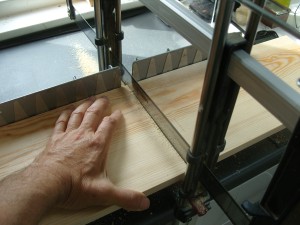 Describe the connection between the products you make and the way in which they are made.
Describe the connection between the products you make and the way in which they are made.
The relationship between what I make and the way I make them cannot be separated because one thing feeds off the other. This can be most clearly seen when I am making something from the unprepared timber I find when I am foraging in the woods near where I live. For most of my artistic life I’ve worked with prepared timber, but a couple of years ago I accidentally discovered the pleasure of working with timber straight from the tree. It not only has a completely different texture but plays a much more important part in the design of a product because of its shape and size. One particular piece might be suitable for the leg of a chair or stool and another straighter piece for a towel rail or clothes hanger. This recent discovery has provided me with a new and exciting departure from my more regimented work and I see it as a collaborative way of working alongside nature rather than imposing a design upon it.
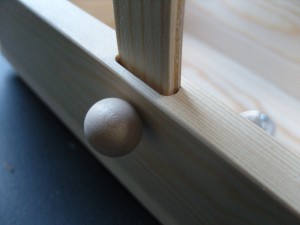 How did you begin creating pieces for the garden?
How did you begin creating pieces for the garden?
I started a couple of years ago when a garden designer friend of mine asked me to make her some oak benches for one of her clients. One thing led to another and I ended up designing and making a birdhouse for her Artisan Garden at Chelsea Flower Show. The birdhouse proved very successful and I then began producing other products for the garden like planters, obelisks and trugs.
How long does it take to create each piece?
Everyone asks me that question, but it is one that I can never answer properly as it is so difficult to say. The design can take years to develop and is partly based on what I can make with the tools and materials I have in my studio as I make everything myself entirely by hand. Only the odd component is outsourced, like the beech balls and dowels used to make the pegs that secure the handle in the trugs. It is pretty much obvious that my products are not mass produced, so I can only turn out a few each day and that’s probably how it will stay for the foreseeable future.
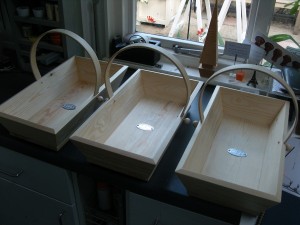 If you had to pick a favorite piece from your collection, what would it be?
If you had to pick a favorite piece from your collection, what would it be?
If I had to answer this question honestly first on my list would be the “Trook” as holds a special place for me because of its simplicity and the story attached to it. The word “Trook” comes from the words “Tree” and “Hook,” which I made up because it seemed to fit perfectly with the nature of the product and describes exactly what it does. Like a lot of designs it came about almost by accident when I had to cut down a tree in our garden. I tried to save part of it in a useful form, so I made a number of hooks for the studio. I first started selling them in a London East End store called Mar Mar Co and they took off from there. Part of their attraction is their individual character but also the label that accompanies each one and tells you exactly where it came from and which type of tree. I guess it is not the most original thing I have made, as I now know of a number of other people who make them, but I like these because they connect the place and the maker with the owner like no other product.
Second on my list would be the Williams-Sonoma Vegetable Trug, which might sound slightly sycophantic, but I’m pretty pleased with it as it has been a long time in the making. It started a couple of years ago when I first decided to turn my hand to more utilitarian products, which were still very different to the one you see on sale today. Everyone liked it, but it was more decorative than functional and very labor-intensive, so it was difficult to sell through retail outlets. I sold some through my online store but then Robin Horton’s Urban Gardens featured it last year, and it was picked up by Remodelista, and I began getting orders from America. Unfortunately, I was totally unprepared for this and the postage was costing me nearly as much as the product so I needed to rethink my business plan (not that I really had one, but never mind). After Remodelista came, I had a feature in Design Sponge and then Apartment Therapy. Because of the interest I was getting from overseas, the challenge was to design something that could be sold online without the expense of disproportionate shipping costs. This exposure coincided with some of my work coming to the attention of one of the Williams Sonoma’s buyers and I was asked if I could make something specifically for Williams Sonoma Agrarian. Eventually I managed to solve the problem of excessive volume by making the handle removable and reducing the weight but retaining the strength. I’m hoping that this new design will be a success as everyone has put in so much effort to bring this product to market.
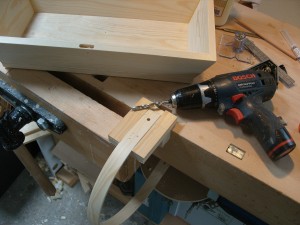 Are you a gardener? Tell us about what you grow.
Are you a gardener? Tell us about what you grow.
I grow quite a bit of soft fruit, but I’m not really a gardener. However, looking for the wood to make “Trooks” (tree hooks) takes me out of the studio most weeks and is such a wonderful way to connect with nature by foraging among the woodland near where I live. Nothing I collect is deliberately cut down, but as a consequence of sustainable coppicing or the result of a tree coming to the end of its natural life. Sometimes this takes me to places far away from my studio and this year I returned to a small island near where I used to live in Greece and collected olive wood from trees planted by the Venetians hundreds of years ago.
How did you learn the art of cabinetry and woodworking?
I had a pretty good teacher at school when woodwork was a taught lesson, and this has stood me in good stead for what followed — which was largely a journey of self discovery.
Are there other artisans you admire?
This is a tough question because I’ve come across so many — the world seems a different place these days, with all sorts of people setting up artisan businesses and making a wide variety of products from leather bags to cooked meats and whiskey. I guess I admire anyone who decides to take up the challenge of producing something of quality, as it is really making a lifestyle choice that involves a great deal of work and time but is definitely worth it.

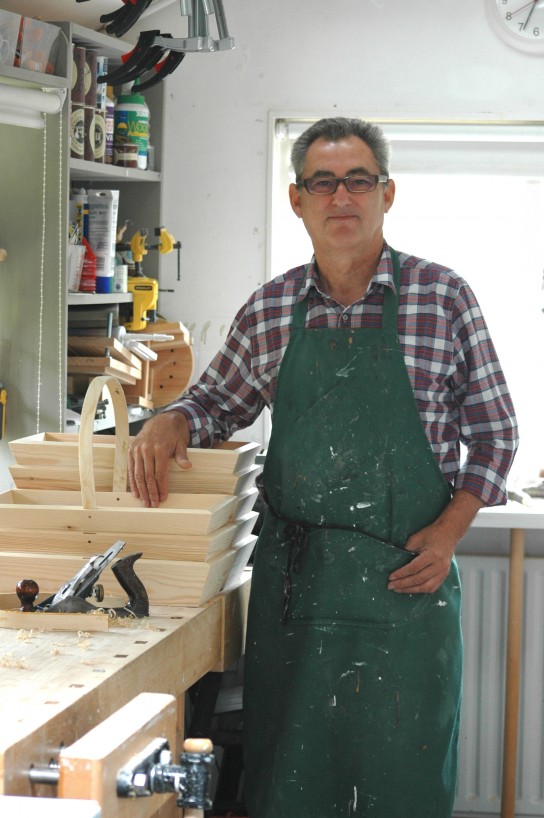
1 comment
[…] with and would be happy to meet in person one day. As he explained in an interview given on William-Sonoma’s blog: “The word “Trook” comes from the words “Tree” and “Hook,” which I made up […]